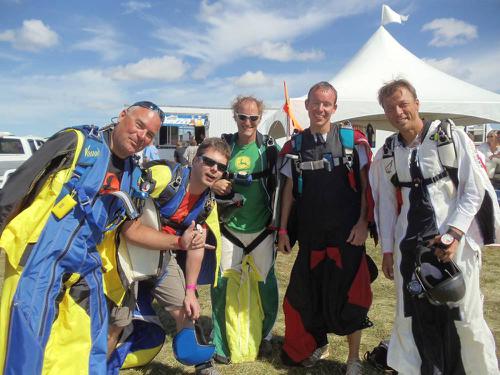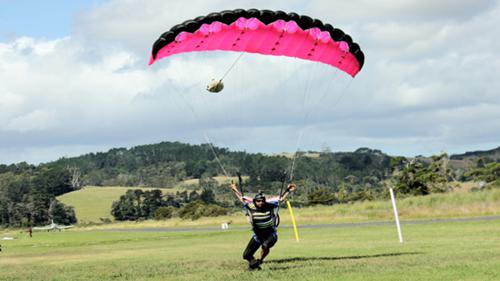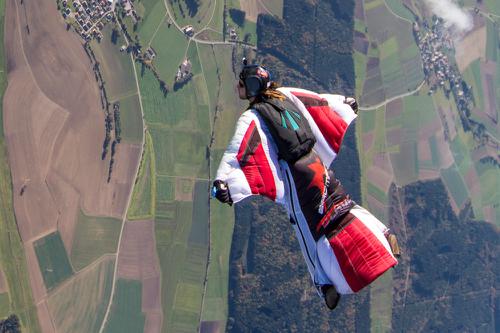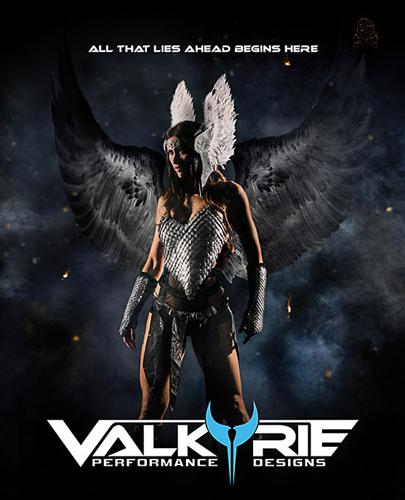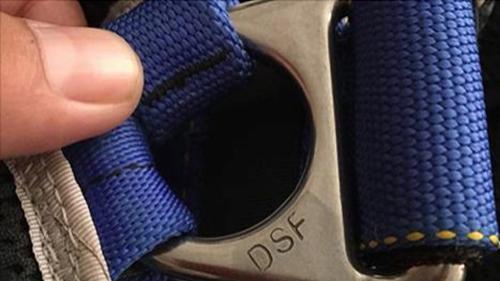Many of us since the attack on the World Trade Center have been asking how this could have been prevented. And if it could not have been prevented, how then could we have had more survivors? As daunting as it is to think of, a parachute appears to be a logical and effective means of escape. After all, Leonardo DaVinci conceived in 1485 the first parachute specifically for the purpose of escaping safely from fires in tall buildings, and there have been countless other inventors and engineers who have worked on similar ideas since his time.
Why then have we never seen this technology in use? Simply put, it is not necessarily a good idea. The recent events have led the public in a state of helpless anxiety to seek protection, reassurance, and a means to escape. Thousands of gallons of water have been sold, as well as a multitude of flashlights, antibiotics, gas masks, and now, personal parachutes. Several companies have taken advantage of this new demand by marketing parachute systems to office workers, hotel guests, emergency workers, and high rise tenants. One example, “The Executive Chute” is being advertised as a “last resort” when fleeing a structure over 20 stories. While the idea of marketing an emergency escape system itself is an admirable idea, it is highly irresponsible to sell these parachutes to people without adequate training. Their web site makes it seem like anyone could just pop it out of their desk drawer at work and saunter out to the nearest ledge and leap to safety.
Another company, Precision Aerodynamics, is marketing the “Emergency Building Escape Parachute System”. They compare the need for an EscapeChute for people in high rises as similar to the need of a life preserver when traveling beyond swimming range from shore. People need to understand that this is not as simple as putting on a life vest. While their web site does say “training required”, they also promote the EscapeChute as an easy and obvious choice: “By following simple instructions, the parachute is automatically deployed for you. All you have to do to initiate deployment is to jump out the window and away from the building. Simple steering and landing techniques can deliver you to the surface with confidence”. A video is provided with purchase of the canopy, which may falsely lead people to believe that this is all the training they need.
B.A.S.E. jumping, for the most part illegal in this country, is the extreme sport of jumping off of stationary objects (Building, Antennae, Span (bridges), and Earth). Buildings are the most difficult, even for a highly experienced jumper. Morpheus Technologies, which provides one of the only legal US training courses for B.A.S.E. jumpers, will not even let anyone sign up for their courses unless they are already a licensed and experienced skydiver with a minimum of 200 jumps. Even then, their training is intensive and rigorous. Kathy Gillespie-Jones at Morpheus says “As a manufacturer of B.A.S.E. specific equipment, we feel a responsibility to the general public. There is no quick fix in this situation. A background in skydiving and a very thorough training course are needed to even begin to pursue what we look at as a SPORT. Even then, we can die!”
B.A.S.E rigs contain only one parachute and there is no back up, as typically altitudes are so low that it would not be possible to deploy a reserve in time. Packing must be perfect as well as your body position when jumping off the building to provide for the best chance that the parachute will open properly, on-heading, away from the building and with adequate horizontal separation. There are so many other variables that need to be taken into consideration when executing a base jump just under good conditions, such as exit height, wind patterns, piloting the parachute, just to name a few. An experienced and trained B.A.S.E jumper under good conditions is going to be a highly different model than a panicked inexperienced office worker, who would in all likelihood be severely injured or killed using a parachute to escape from a building. For a novice even with training, the lack of conditioning would cause a sensory overload which could prevent them from being able to react and properly use the equipment.
Fire within a building would take this to an entirely different level of risk. Greg Yarbenet, the inventor of the slider which made modern parachuting possible, did studies about fifteen years ago, researching the effectiveness of escaping from a burning structure with a parachute. ”Parachuting from a burning building has to take into account the very unusual wind patterns that develop from a very hot rising air mass that is being replaced by the cooler, lower air that is now funneling upwards to replace the hot air.” He clocked the thermal updrafts at over two thousand feet per minute at the top of a test burning building. Air near the ground began to swirl upwards in a small vortex that changed the velocity and direction according to doors, windows, and other building shapes that allow the air to find the easiest path to the flames. Rising thermals off of the top created sudden downdrafts on the leeward side. Yarbenet found that any normal size parachute would not function well in such turbulent conditions, and could be pulled back up in the strong updrafts or collapse in the multiple vortexes along the sides of the building.
Daniel Preston, of the New York based parachute company, Atair Aerodynamics, has mixed feelings on the subject. When asked if he would work in a high rise without his B.A.S.E. rig Preston answered “definitely not”. He believes that people should be given all the facts, allowing them to then seek training and make an educated purchase. However, he is against the selling of escape parachutes to the general public. As a New York company, Atair finds the ads for these products to be in horrendous taste, dangerously misleading and opportunistic. One company, B.E.S. even showed a banner of one of the towers being hit and people falling to their death. “It is specifically the way these products are being marketed that is irresponsible”, says Preston, “B.A.S.E. jumping requires training, period. It is not something you can just learn in a few hours from reading a book or seeing a video. The first step is to learn how to skydive. With a couple hundred jumps under your belt, you could consider learning B.A.S.E.”
Preston estimated the survivability rate of some of these personal escape parachute systems to be less than 50%. That means that half of the people jumping would probably die. Other industry leaders estimated the survivability rate to be less. By comparison in skydiving where everyone is trained and licensed, fatality rates are less than one in one hundred thousand jumps. The majority of those fatalities are caused by pilot error under a fully functioning parachute. While it would be arguable that one should take any chance in the case of extreme emergency, the difficulty with that is determining what exactly is a last ditch situation. “I could envision many situations where people would be likely to jump when they don't have to”, says Preston. It is estimated that 70% of the people in the World Trade Towers escaped the through the stairwells.
According to Cliff Schmucker, president of the Parachute Industry Association, “there’s obviously people out here trying to make a quick buck in a bad situation….At least one person was looking into congressional relief for the liability issue.”. This would be disastrous, as it would remove accountability for improperly designed, tested and marketed products.
Dan Poynter, a well known publisher and writer of educational and technical texts on sport parachuting, says “sure, if you are a base jumper and on the 28th floor, keep your rig at the office, but for other people it doesn’t make a whole lot of sense”. Poynter believes “a parachute could work for some people in some cases, but there are many, many questions to be answered with regard to practicality, cost, training and design.”
Atair manufactures a B.A.S.E. parachute called the Troll and states that the parachutes accumulated one thousand live real world jumps before it was offered for sale. What is being marketed by many companies as escape systems, is untested technology. The way that it is being marketed is misleading and sensationalist. “While I am not against the possibility of escaping from a building with a parachute”, says Preston, “there are so many things that need to be taken into consideration, and which seem to be overlooked in these current products.” “you can not just take an off the shelf para-glider reserve parachute, put it in a container and market it for a wholly different, far more complex and demanding application…its not safe.”
The systems being marketed at this time have appeared on a variety of television shows and are gaining a lot of publicity. “From what we have seen”, says Gillespie-Jones, “The harness seems to be extremely awkward and the point in which the static line connector is located is very prone to cause an entanglement with the body. We witnessed complete failure by a company representative to put this system on properly. This was done on the Today Show in a controlled environment. There is no way that a person in a panicked state could begin to equip themselves properly in a timely fashion.”
It is very frustrating to see the direction that this whole thing is going in. Companies seem to be jumping on the bandwagon, offering parachuting equipment that in any other application would take months if not years of research and development, drop testing and live testing in a variety of environments before there would even be a consideration to sell to the public. What transpired in New York, Washington and Pennsylvania is absolutely tragic and it was horrifying to see those people jump from the World Trade Center. Unfortunately, jumping with many of these escape systems that are being marketed in the aftermath under those same circumstances may not have saved lives, but only extended them by a second or two.


